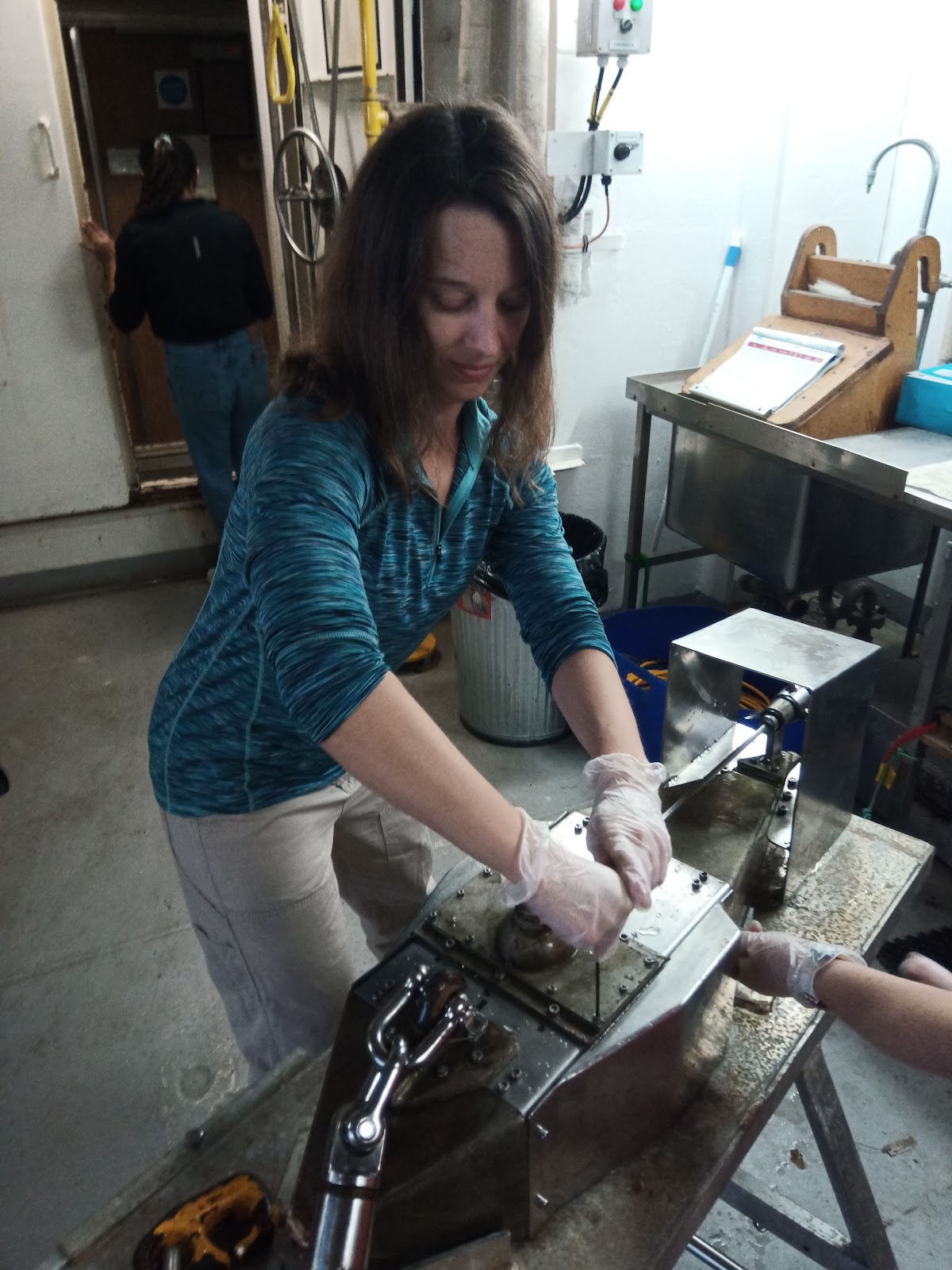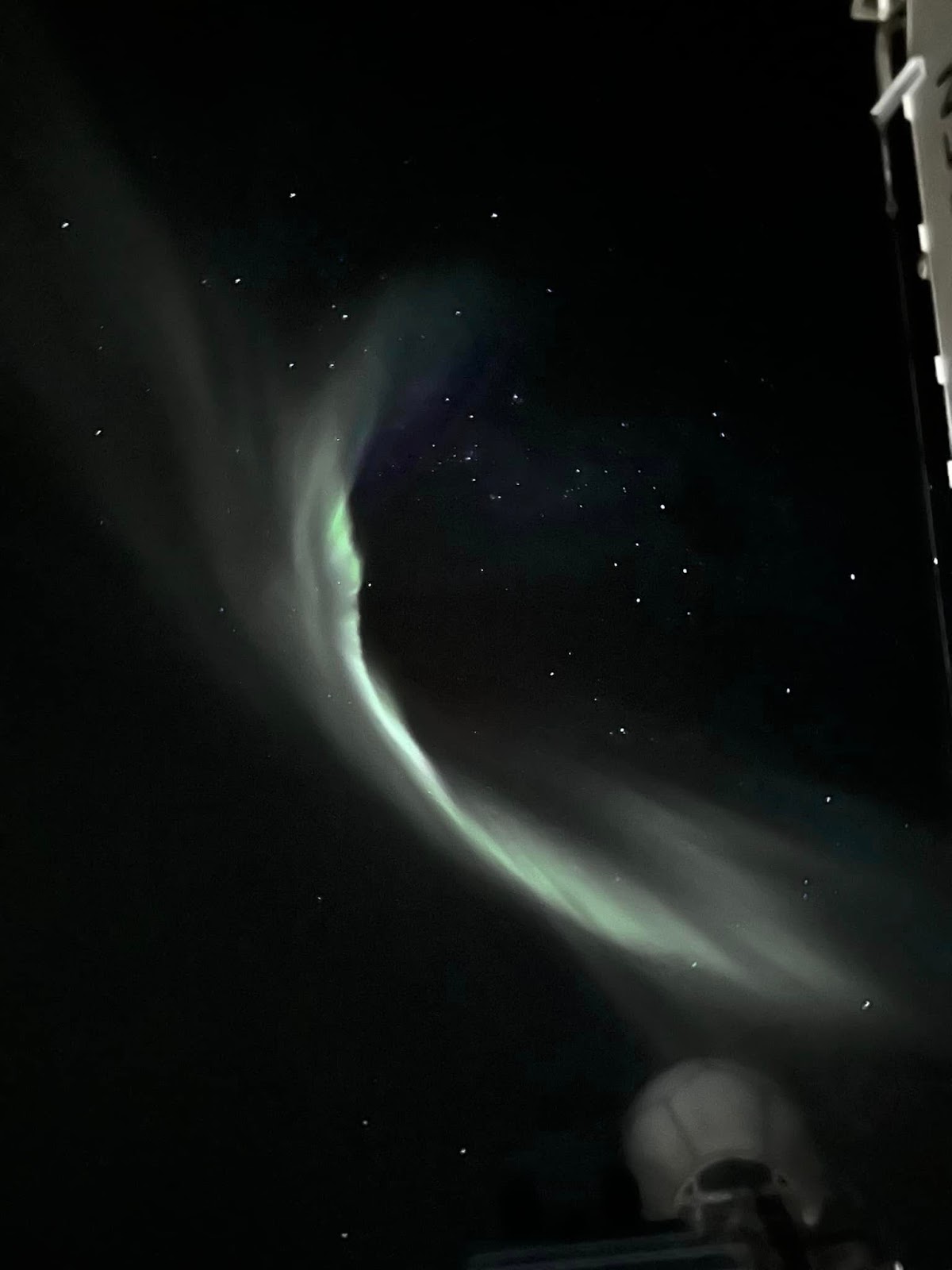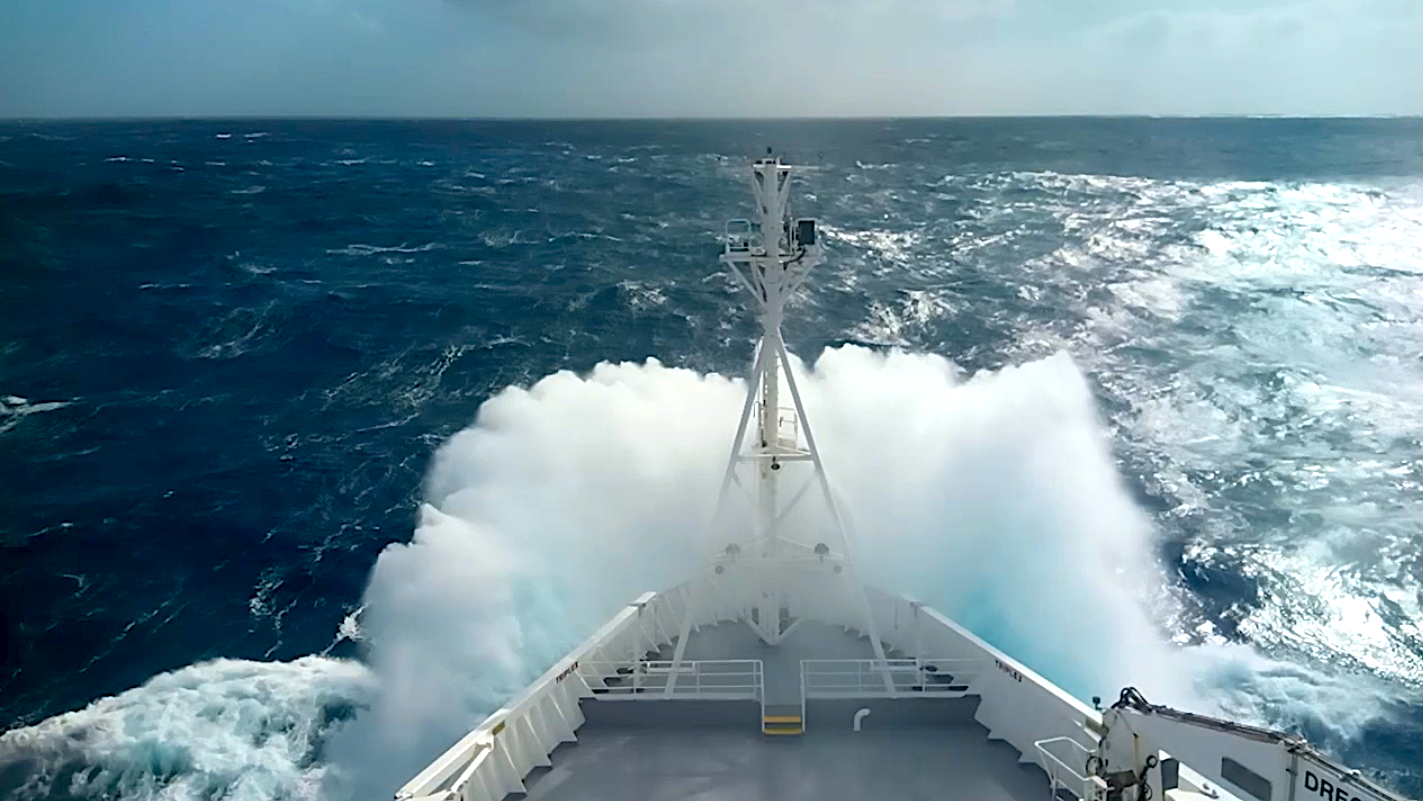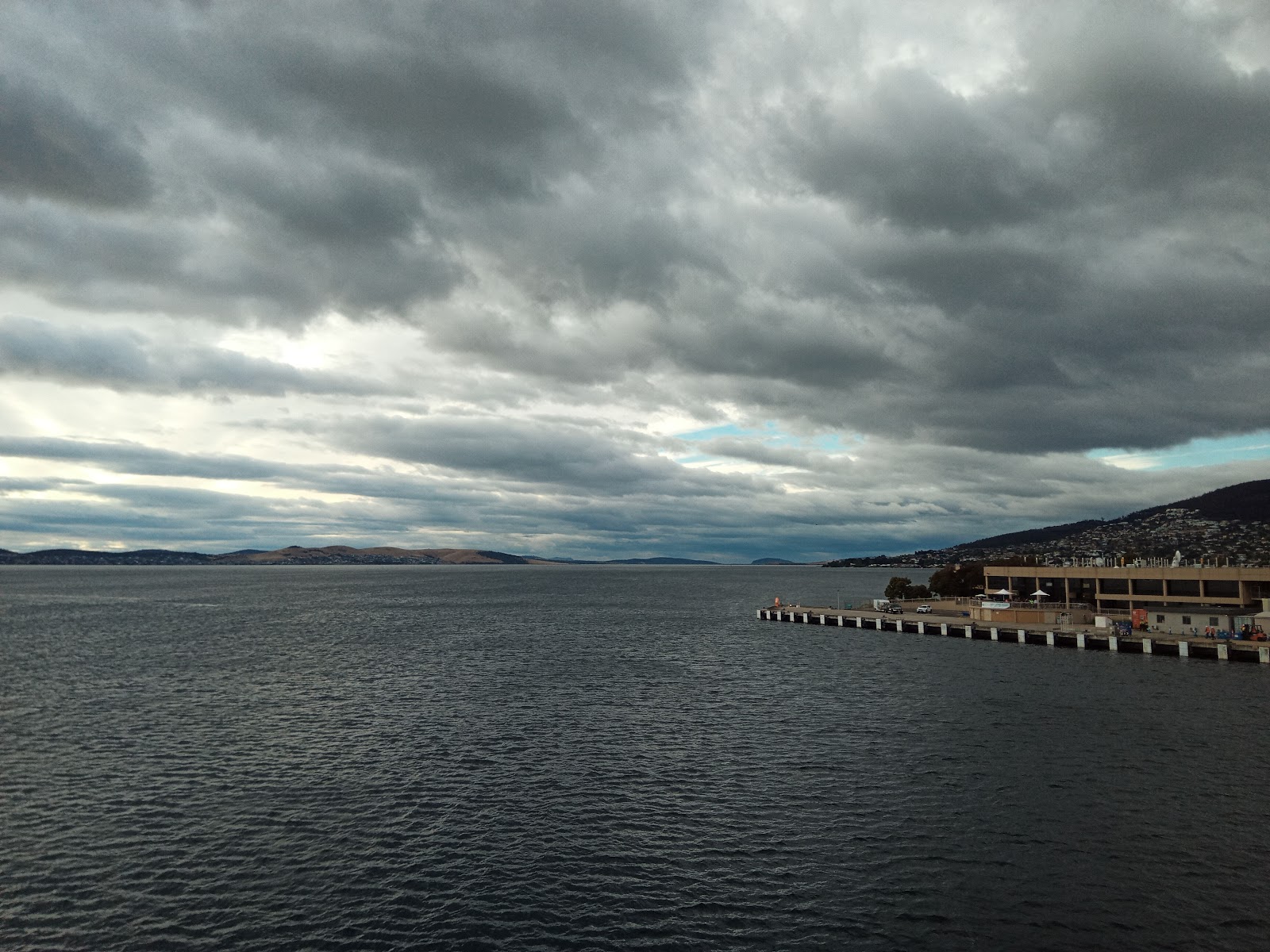Hello! This is Bethany; I am a post doctoral researcher at Yokoyama lab. I recently spent six weeks on a research vessel in the Southern Ocean near the coast of East Antarctica. While there, we took water samples and sediment samples, mapped the seafloor of the area, and deployed various instruments for the purpose of learning more about the production of Antarctic Bottom Water in this region.
During this voyage, we had two successful Kasten core deployments off the coast of Antarctica. Both cores were around 3.5 m long and were sampled for a variety of analyses. We also deployed a piston core which recovered about 15 m of sediment. These core sections will be split and sampled later onshore.
 |
| Efficient sampling of the Kasten core |
 |
| Preparing for the piston core arrival on deck - the core needs to be cut to 1m lengths |
In addition to the sediment sampling, we took water samples from more than a dozen different water depths at five different sites using the CTD (conductivity, temperature, density) rosette with 36 niskin water bottles attached to it. These water samples will be analyzed for carbon, oxygen, various metals, diatoms, and radiolarians in an effort to learn more about ocean currents and the interaction of different water masses.
 |
| Neatly packed water samples |
 |
| Loosening the bolts of the CPR to switch out the silk spools |
The transit south from Australia took 11 days. On the way, we encountered a bit of a storm and saw 8-10 m swells. The biggest wave during the storm was 23 m!
Also on the way, we saw many, many types of birds including a variety of albatross and petrels. It was very exciting to see our first iceberg as it meant we were getting closer to the study site. Experiencing the lengthening of days was also quite interesting.
 |
| Iceberg! |
One highlight of the trip was being able to see the Aurora Australis one night as we were on our way back to Australia. Beautiful green ribbons filled the sky against a backdrop of the Milky Way while the light of the full moon reflected off the ocean.
 |
| Photo credit: Vikki Lowe |
As often happens, the plan for science did not go as expected. Due to extenuating circumstances, it was necessary to turn back after three days at site. We made the most of the transit back to Western Australia with deploying the CPR and Argo floats on the way. Argo floats make continuous measurements of temperature, salinity, pressure, and other biogeochemical measurements while drifting at depth, and the data is occasionally transmitted back to the data center. We were also able to recover one more Kasten core and more water samples on the way from Western Australia to Hobart, where we disembarked.

